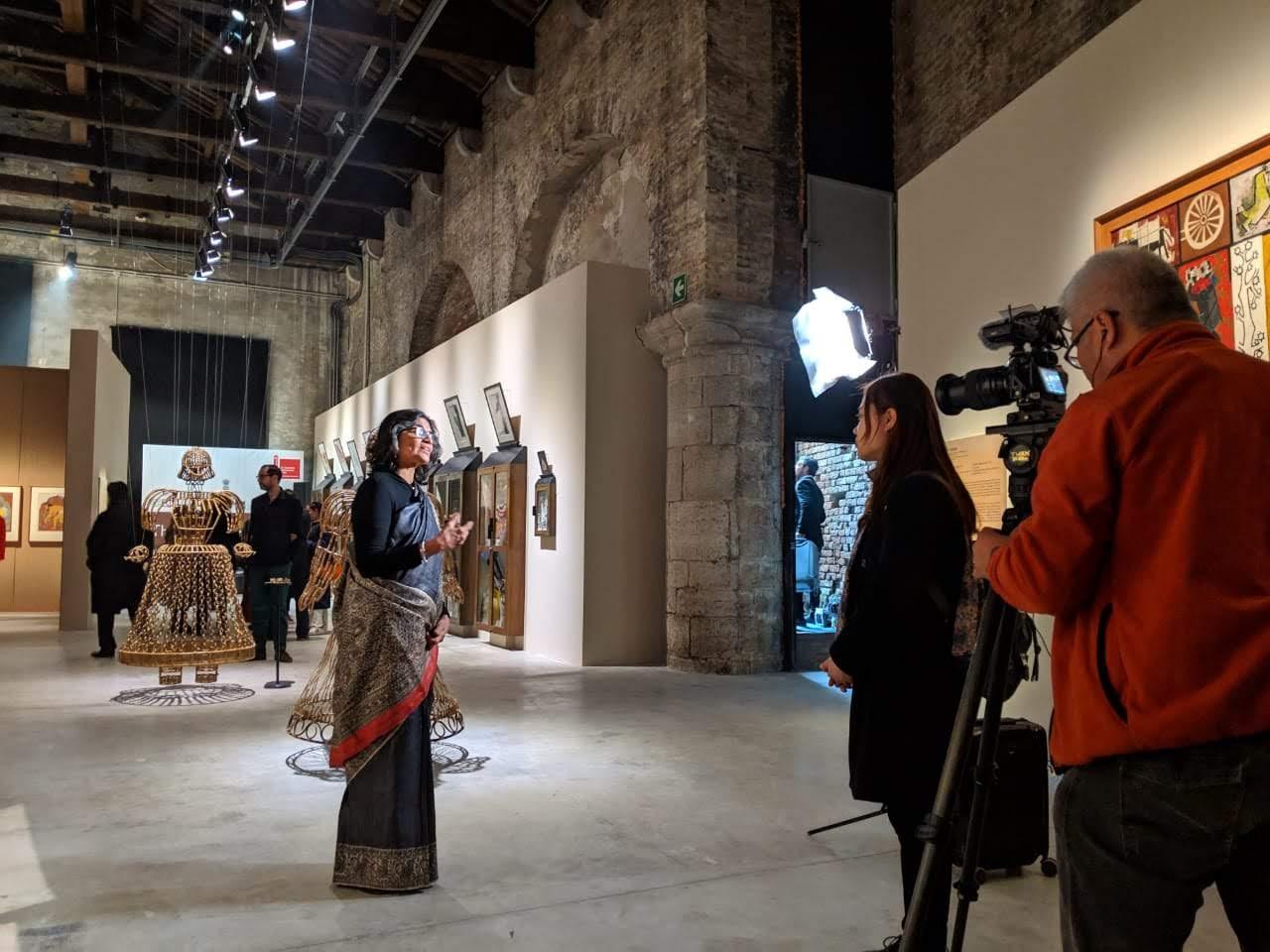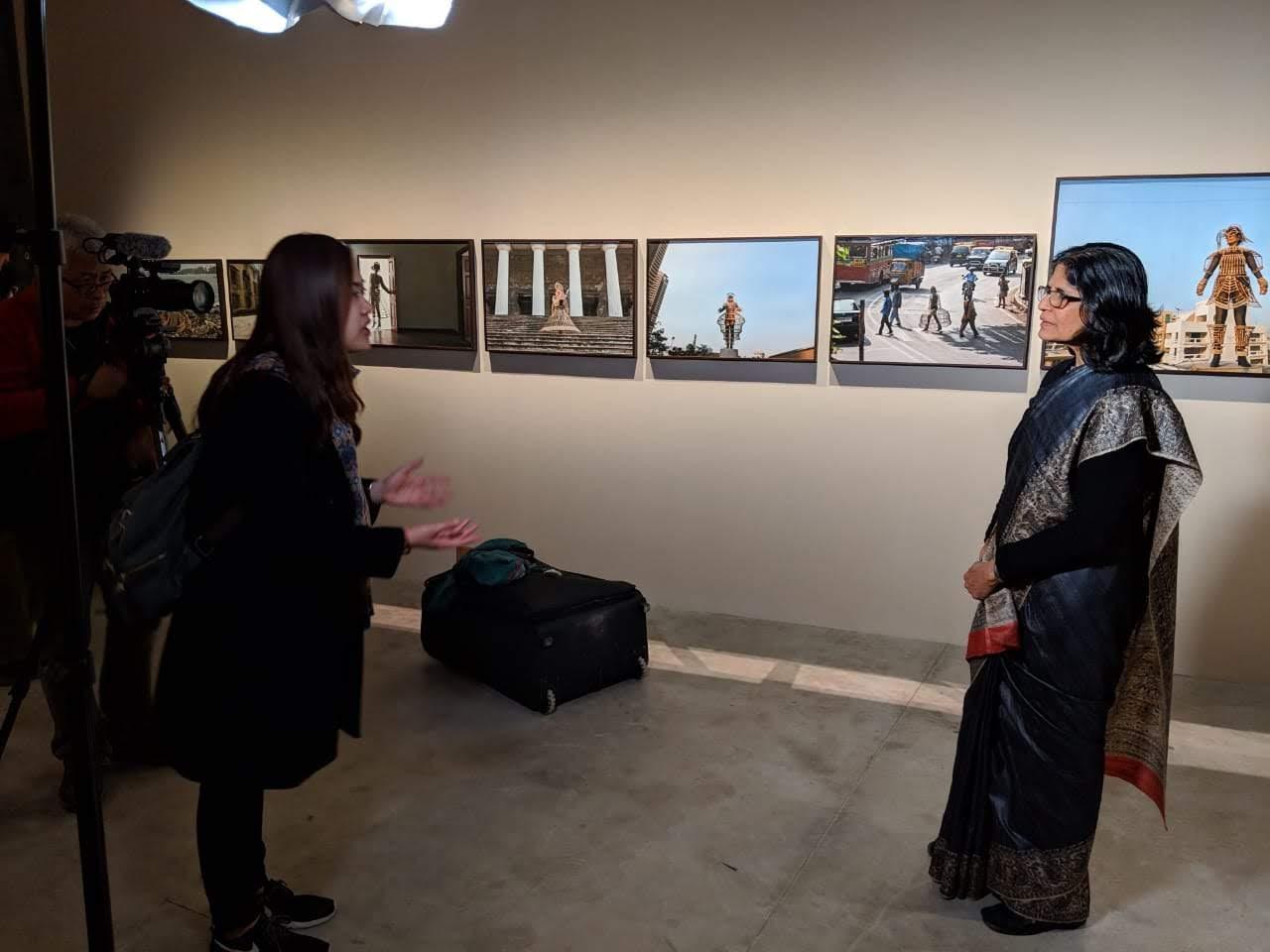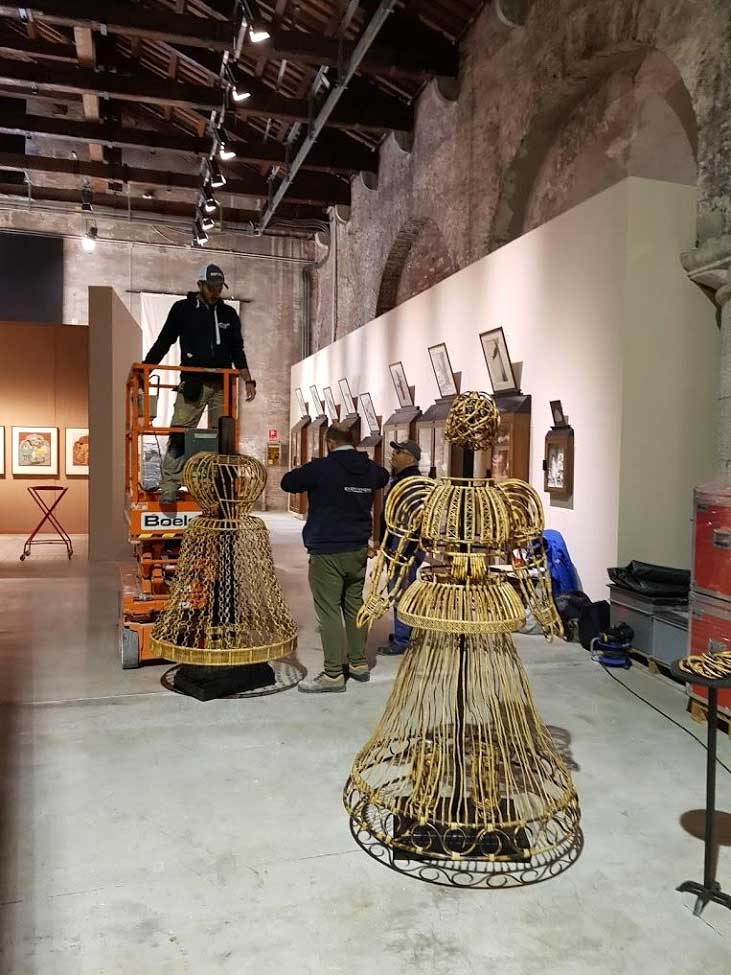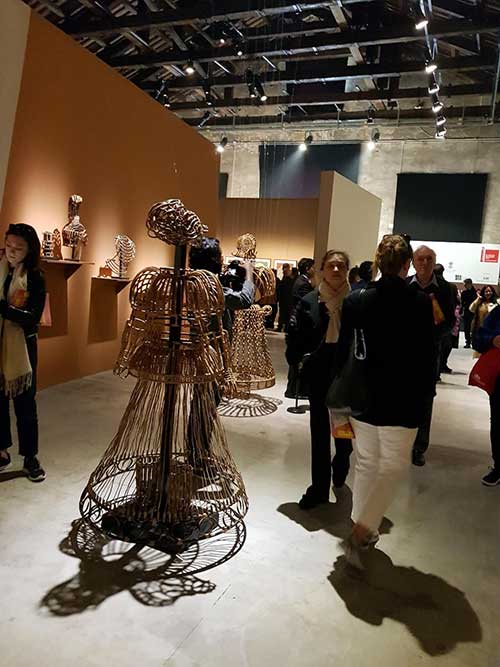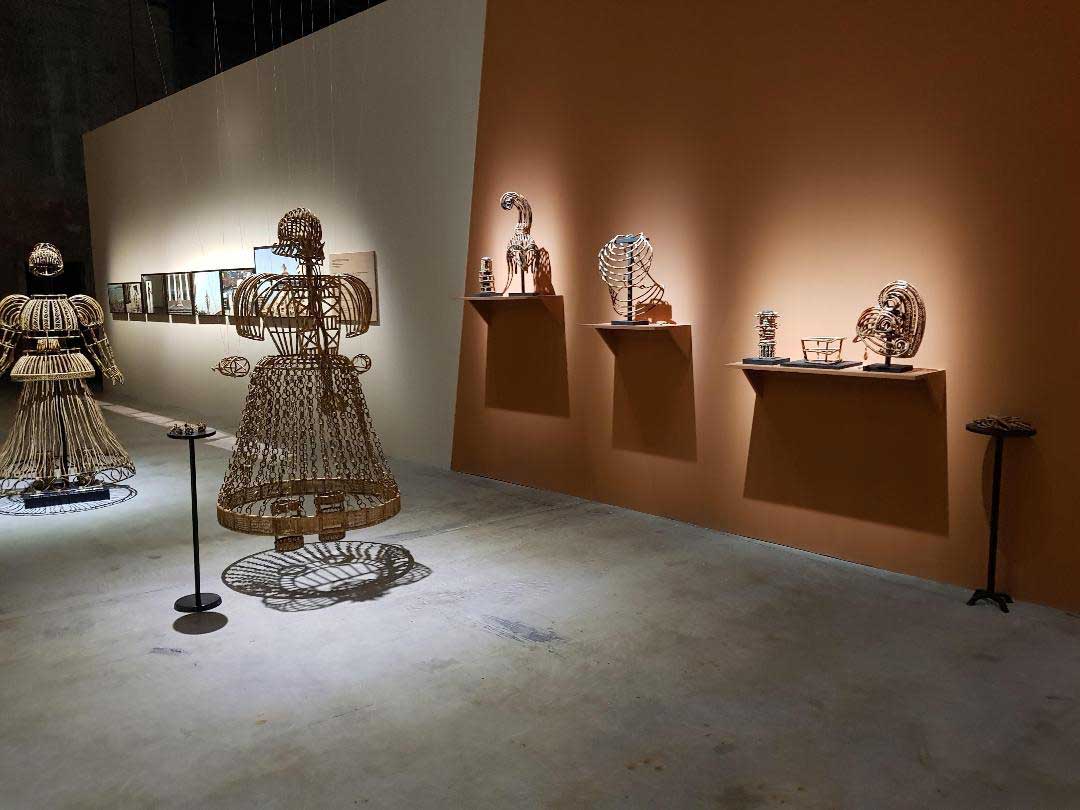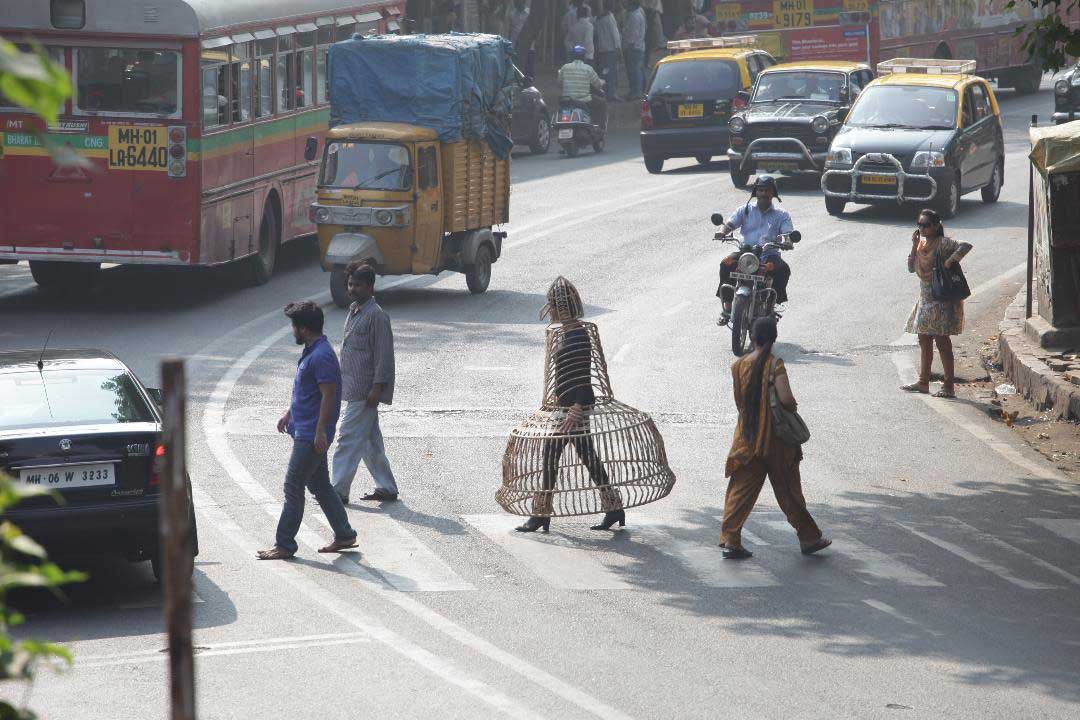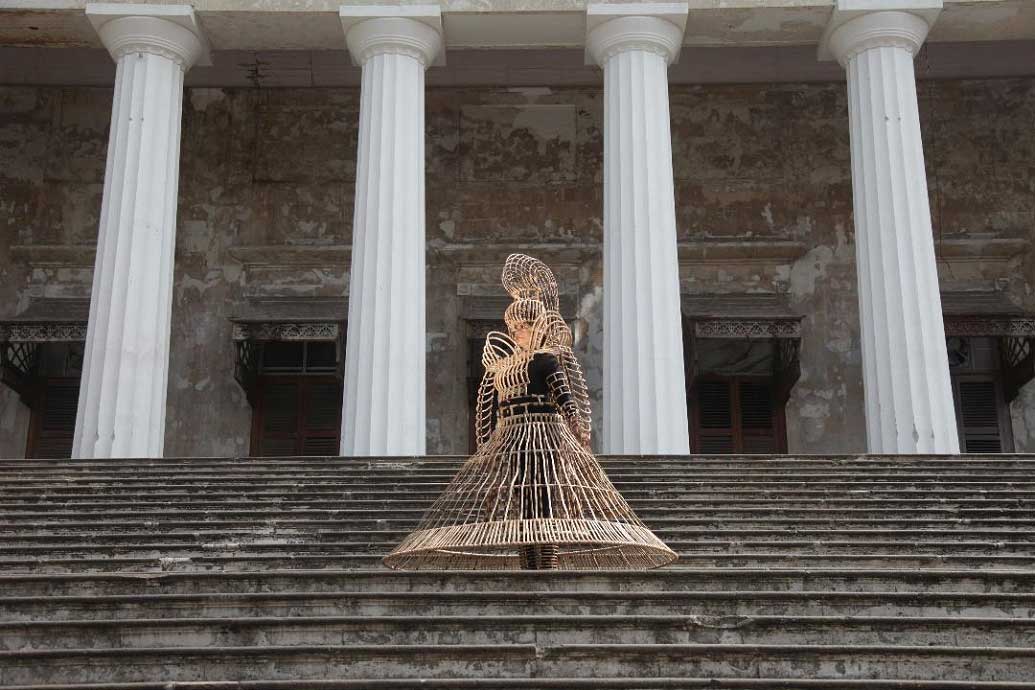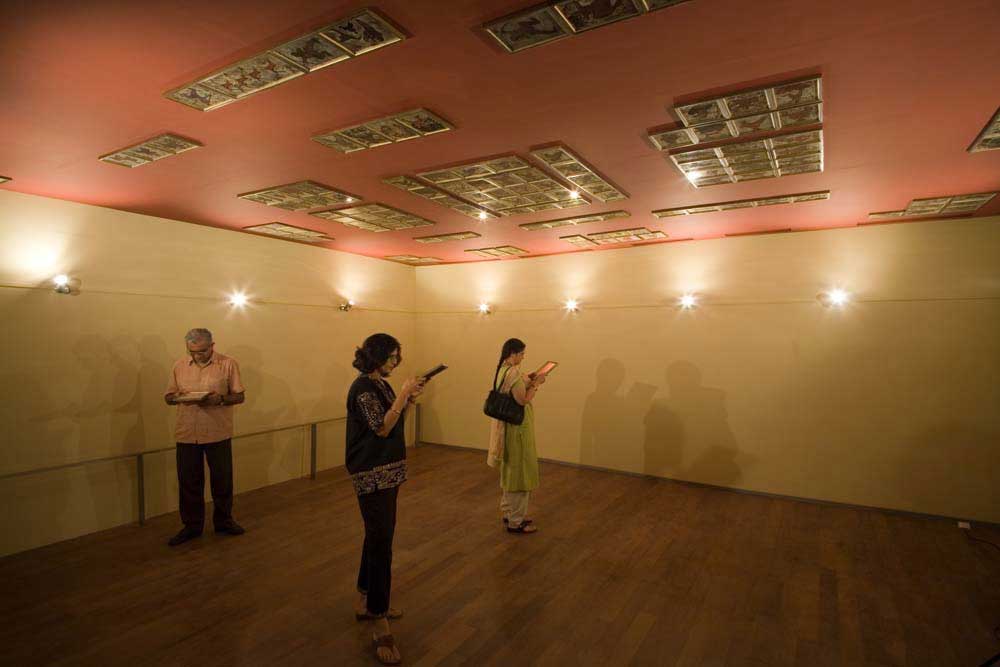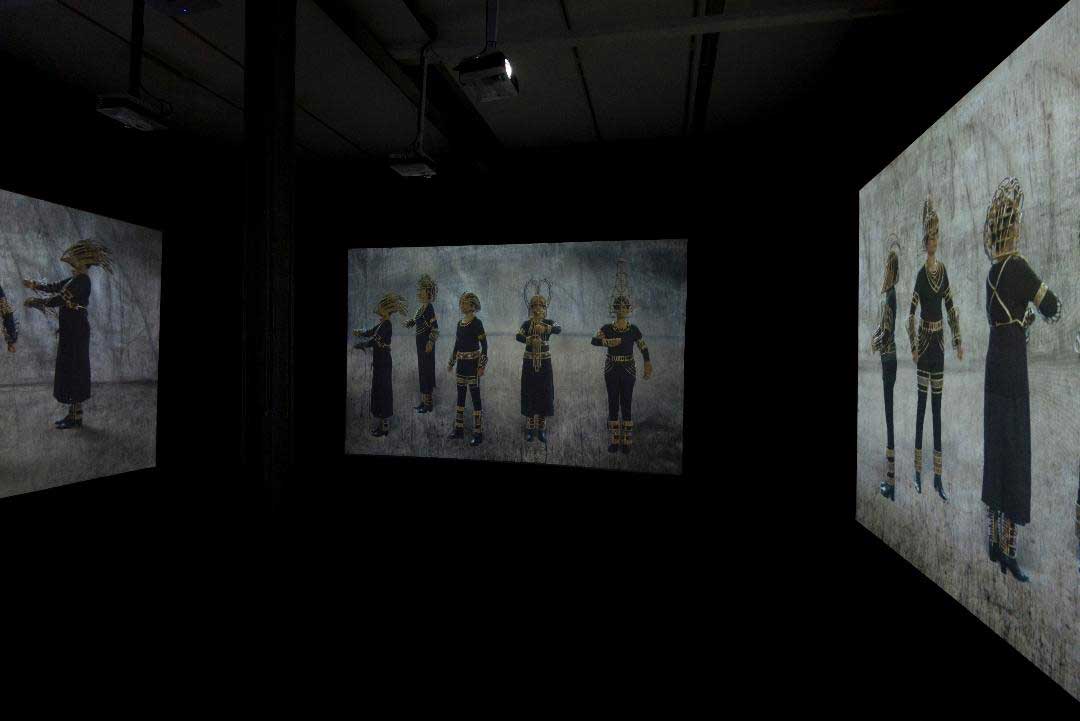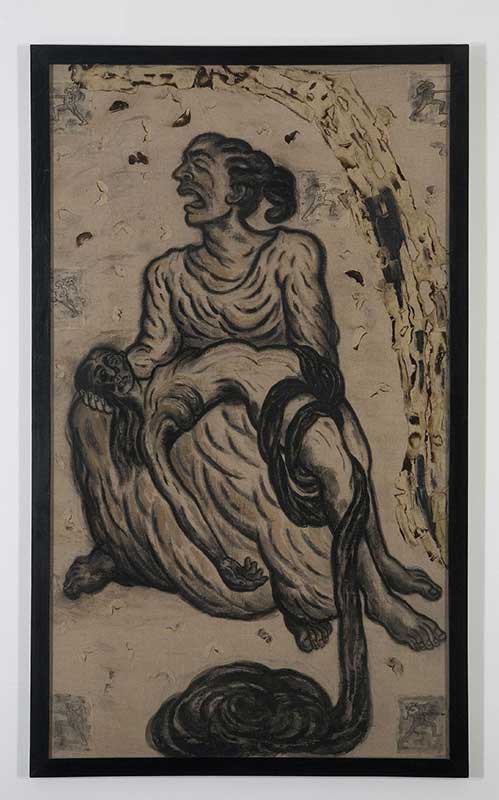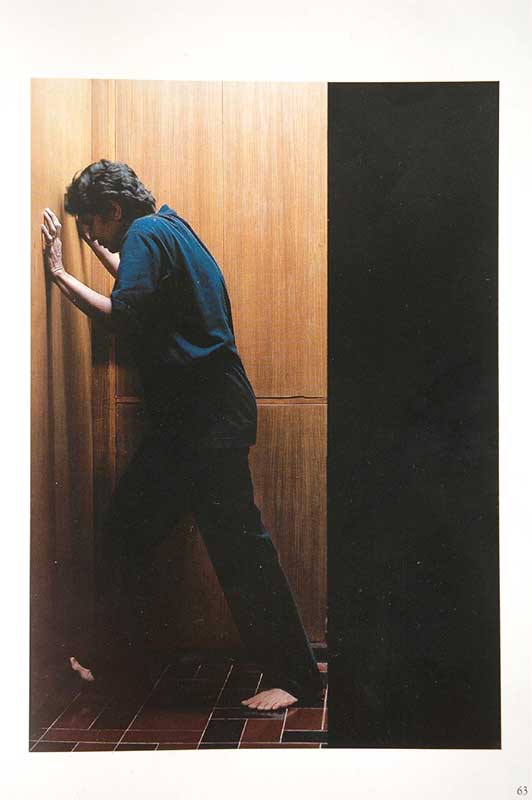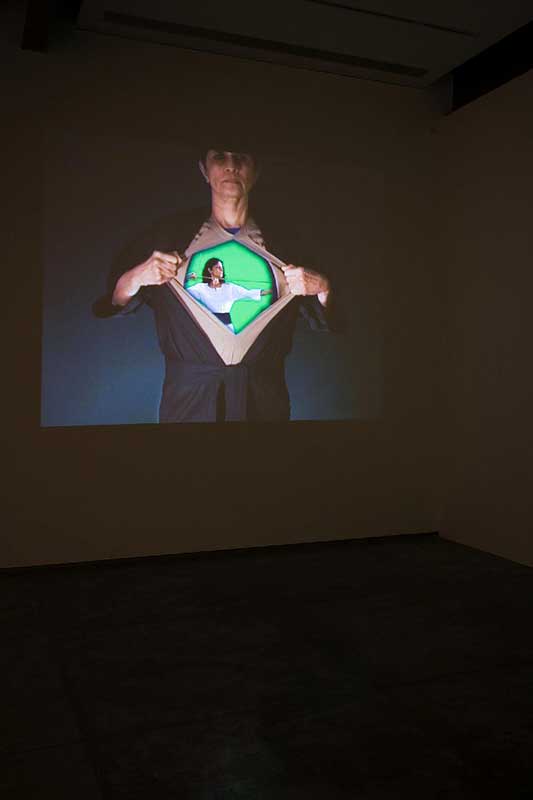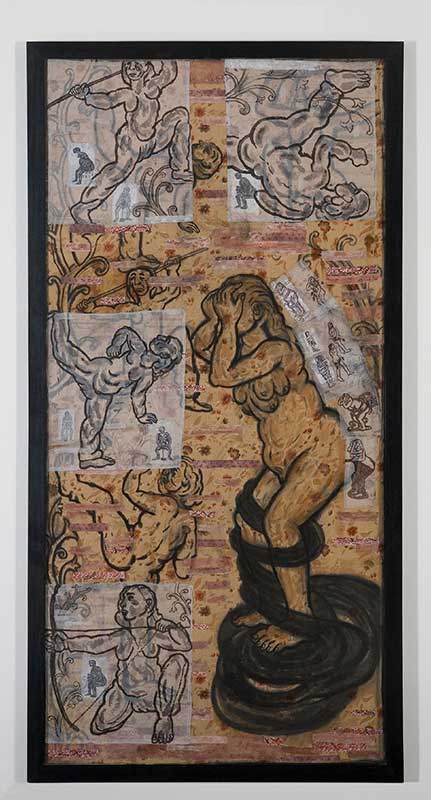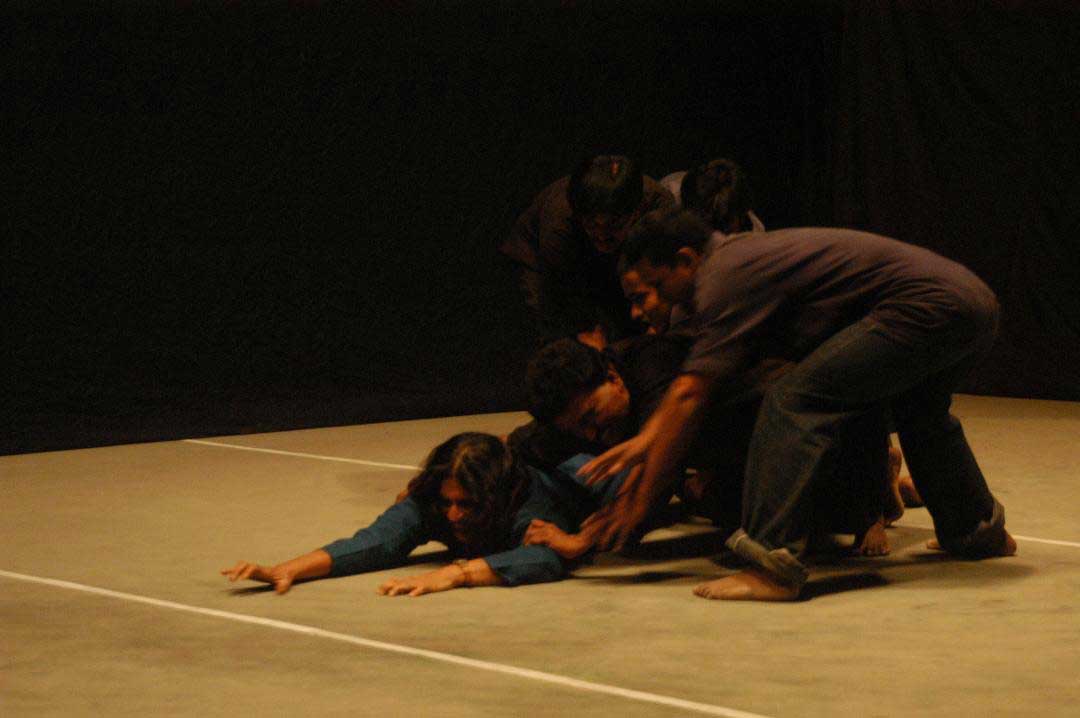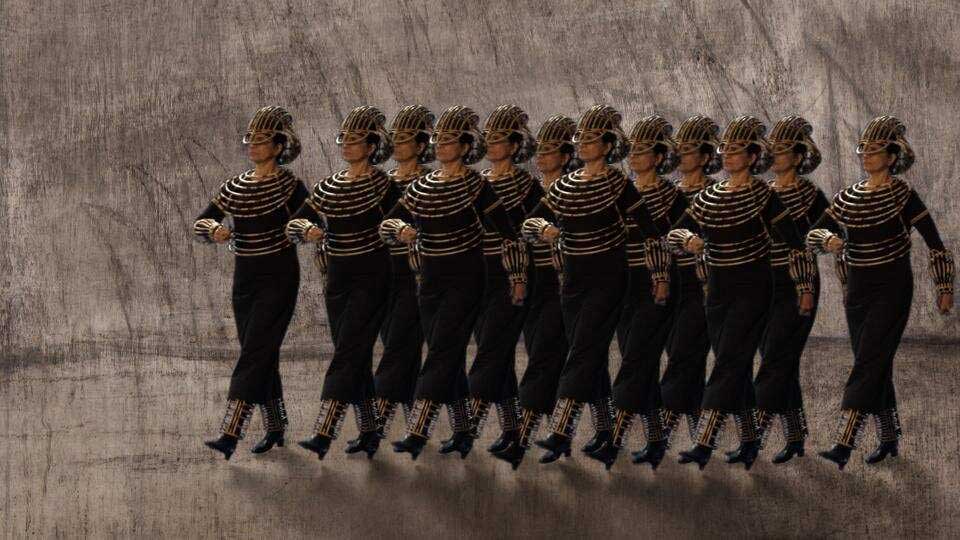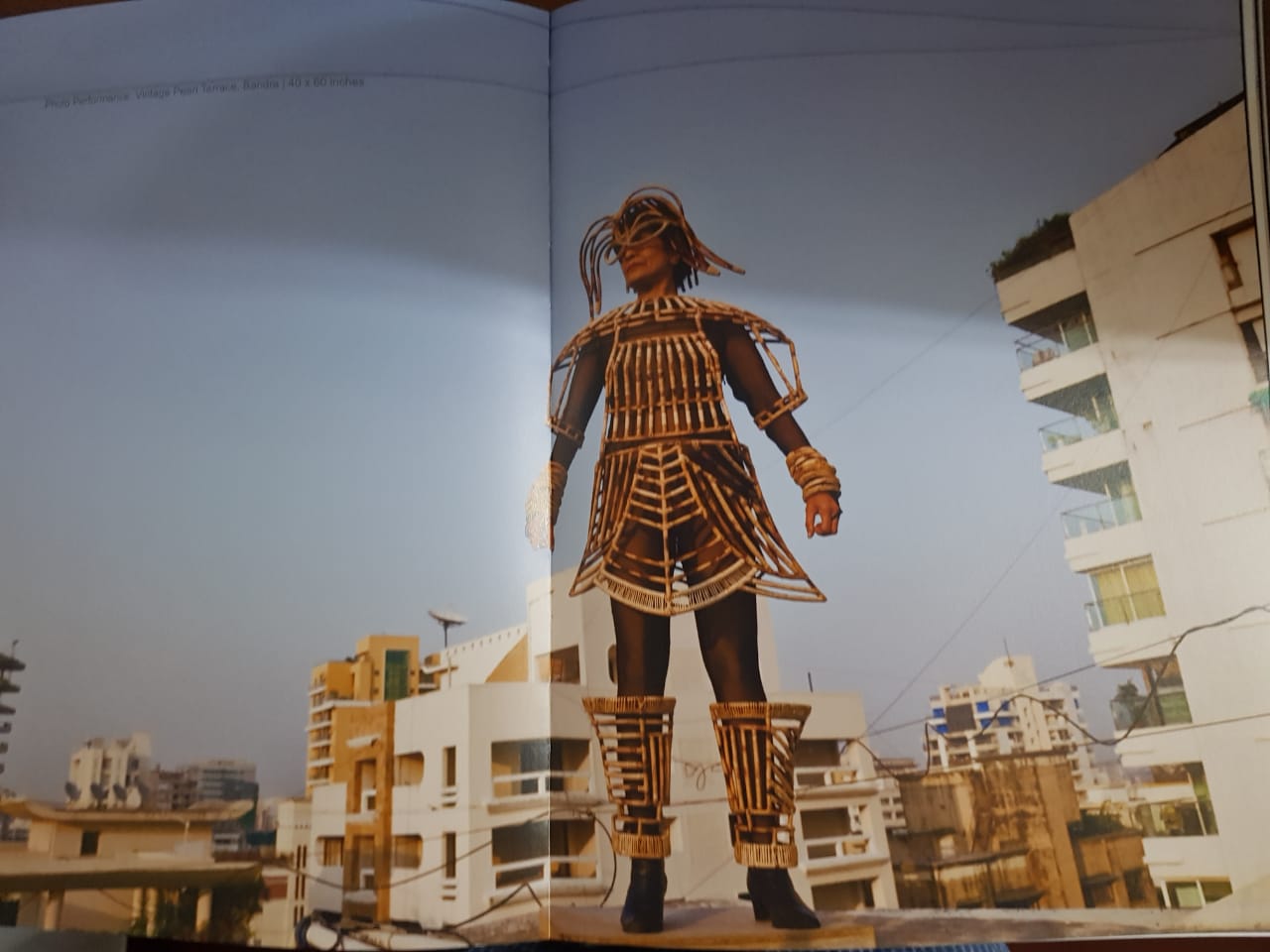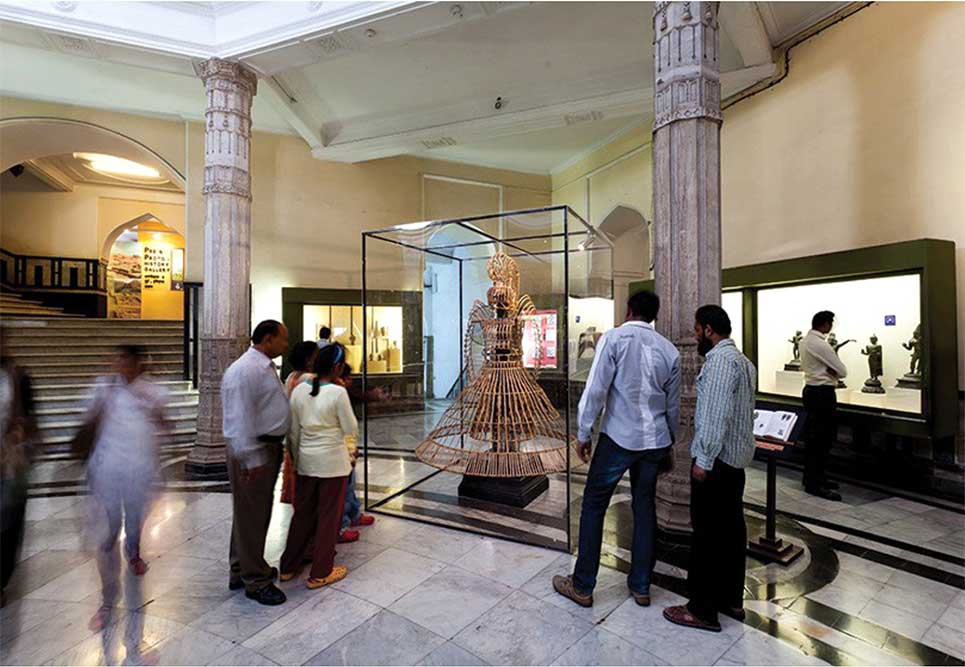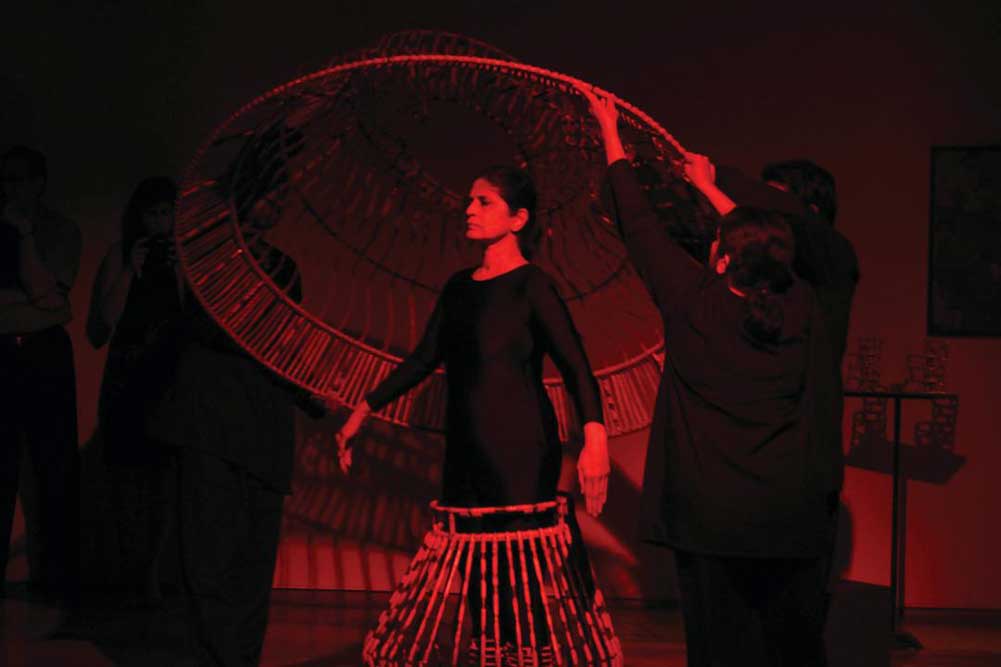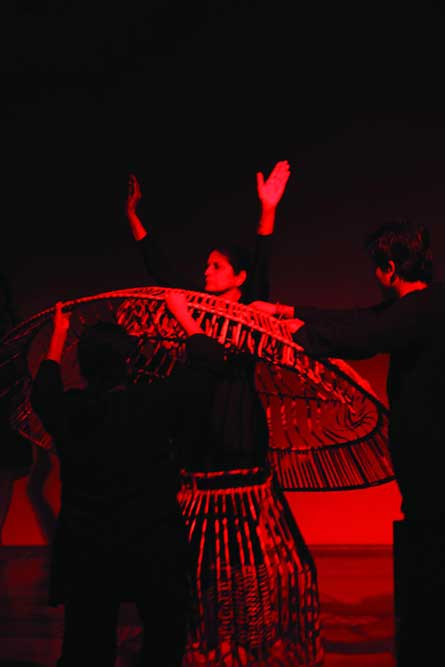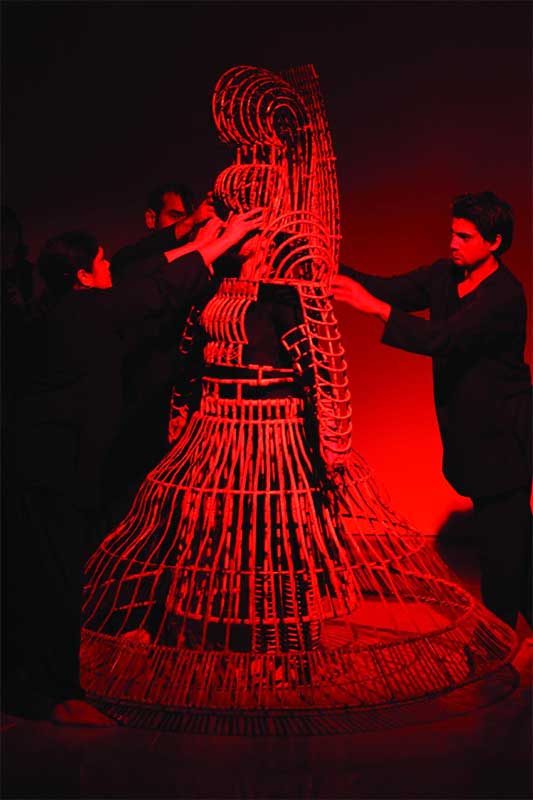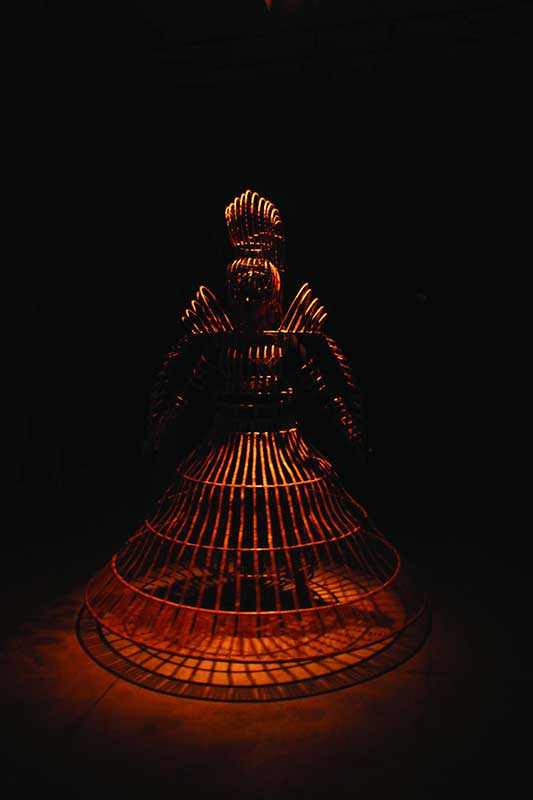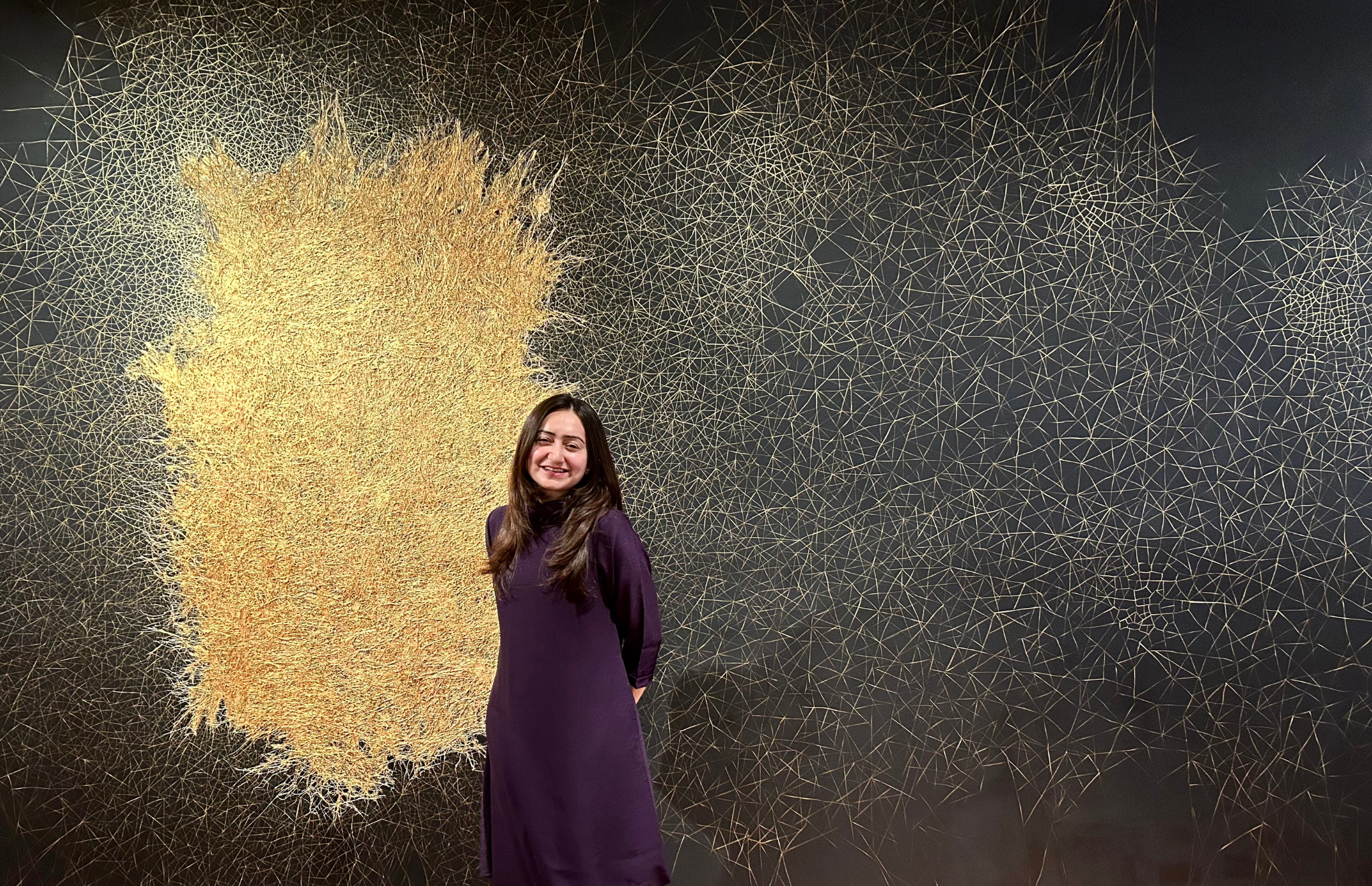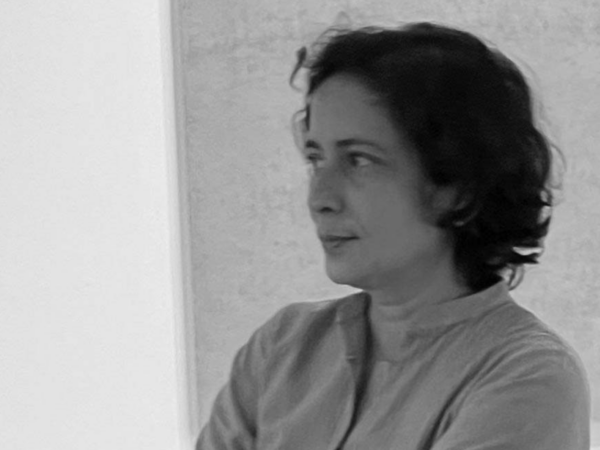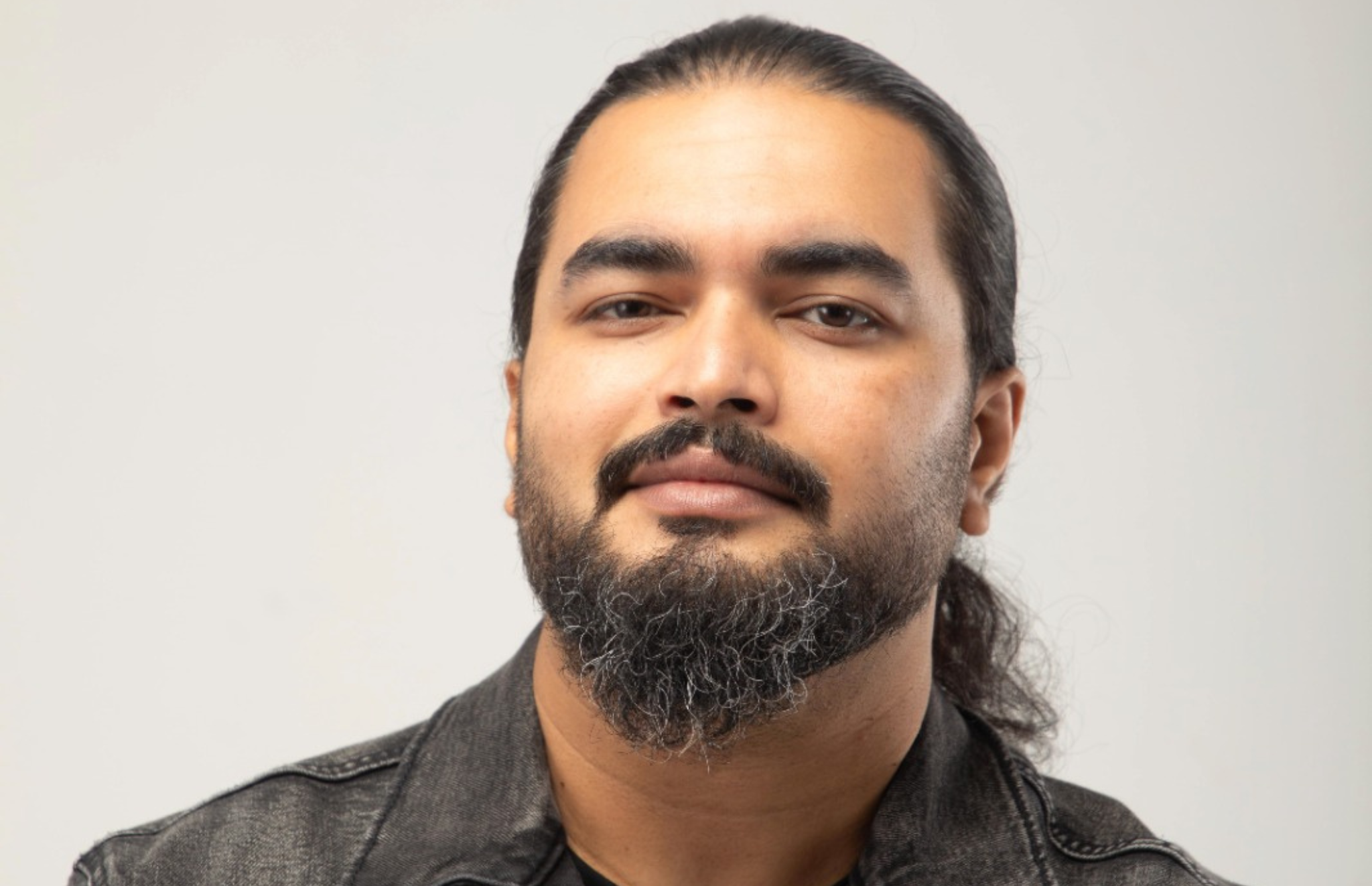Since the mid eighties the concerns in my work shifted from my earlier concerns of human predicament to gender specific issues. My work since then has been an inquiry into the lives of urban women and their spaces like the home space, work space cultural and social space within the society which is essentially patriarchal. I observed that objectification, ownership, commodity, hierarchies are still deep rooted within the society and surface at various stages, some times obviously, some times subtly, leading to various kinds of discrimination and violence towards women. As a result, women constantly experience a sense of fear, alienation, anxiety, claustrophobia etc.
At different stages of my art practice, I have addressed some of these issues and the possibility of dealing with them. In the early 90s, the need to rearrange and stretch the visual language to address these concerns and go into a deeper inquiry, compelled me to shift my works from two dimensional space of painting and printmaking to three dimensional sculptural space. At this stage my involvement with the intimate theater of the seventies, allowed me the freedom for experimentation with time, form and space. I started doing multimedia installations. I was able to blur the barriers of different languages by using different disciplines. This led to working with moving images. I started using body as the site of contestation for addressing my concerns through performance videos.
SP: Tell us about your experience at Venice Biennale 2019?
SK: My experience of being in the Venice biennale started when Roobina Karode, curator of the India pavilion, “Our time for a future caring”, invited me to be part of the India pavilion. On the occasion of the celebration of 150 years of Gandhi’s birth anniversary. I was left with mixed feelings, surprised, excited, and also a bit uncertain and anxious about how it will all happen with just a month and a half to go. Nevertheless, with constant telephonic interviews by Indian media, I felt responsible as one of the artists representing India. I had visited the Venice biennale several times in the past as a viewer, an outsider. Now I was an insider and the experience was completely different.
I reached Venice three days prior to the opening, only to be welcomed by heavy rains and churning waters in the canals and swaying boats.
The Italian support team was waiting for me at the venue to set up my work. One of the cane armor had to be suspended from the 35/40 ft ceiling without disturbing the heritage building structure. The team of two allotted to me spoke only in Italian and we had just one day to install the works. This was really challenging.
K.N.M.A. had organized several interviews with international TV channels, and other media on the preview day and also the opening day. There was also a special interview of some of the women artists in the biennale and I was one of them. The questions asked were gender-based. They seemed to be well informed about the atrocities on the women community in India, from the recent past. I had to literally defend the (Indian) women community from the notion they had that they were all victims.
Most of the media had similar questions.
They wanted to know what made me do the cane armour ?
Why I had used a cane as a material?
Why I am wearing the armour and posing in the public spaces in Mumbai?
and how my cane armour was connected with Gandhiji.
I will be answering these questions as we go along.
There were several representatives from international galleries and museums at the preview. There were many international collectors, art lovers and artists too. Roobina had done walkthroughs and introduced the artists. Many guests could speak in English. Some communicated through broken English, some through gestures, that they liked the work. They too were interested in knowing more and had similar questions like the media.
On the opening day, the general public walked in. They all stood in front of my work looking at it for a long duration of time, curious and interested. Some who had listened to the interviews with the media came and spoke to me. They were excited to meet an Indian woman artist whose work was addressing the violation of the female body. This led to the discussion on the position of women in India vis a vis their own respective countries. Thus, exchanging different ideas and viewpoints of people from all walks of life became possible. It was certainly an enriching experience.
SP: We would like to know about your installation at Venice Biennale?
SK: Roobina Karode’s curatorial choice of my work consisted of two cane armour which was suspended between Atul Dodiya and Hussain’s works in a long corridor-like space. I would like to share some of the excerpts by Roobina in her catalog essay, “Our time for a future caring”, “Their bare geometry, the linear contours /patterns and unstable shadows on the ground evoke special presence. They reverberate the universal fight for safety and equality’’.
“Safety accessories like sharp-edged bangles and spiked headgears, strong bodice are separately arranged on the shelves.”
Next to the accessories were the performance photographs where I was photographed standing, wearing the cane armor, guarding threatened spaces in Mumbai city that I have been associated with. I stand in the precarious spaces, like the traffic lights, middle of the road, on top of a building, with confidence and courage.
I had worked on this project with Dinesh Pardesi from Mumbai, who repaired cane chairs, and Tonkeshwar and Dhun Barik from rural Assam who made cane thread jewelry. Cane was a new material for me. We were all experimenting with the life-size cane armor for the first time. We worked and learned together keeping aside differences in status and artistic hierarchies, creating a common ground for forgiving and take, a space for co-existence.
Roobina: “Shakuntala’s act of passive resistance and self-assertion can be aligned to Gandhi and thought as much as her idea of creating inclusive spaces for shared working.
SP: You have always been a multimedia artist, what is your favorite medium to work with and why?
SK: I have no favorite medium. Most of the time my process of working is organic in nature. There is no fixed format. When I stumble on material I have not tried before, and I find it could be exciting, I start experimenting with it. I also choose a medium if I feel that is going to address my concerns. I have used soft material like fabric, brittle material like glass, cane and cane threads, incorporated martial arts, theatre, dance, sound and light with moving images, photo performance, live performance, interactive works, and audience participation like in ‘intimate theatre’. I enjoy working in Multimedia and multidisciplinary formats as it allows me the freedom to blur the boundaries of different disciplines and helps to expand my visual language. This way of working is exciting and challenging. There is scope for innovation and discovery.
I invite the viewer to interact with works or to negotiate with spaces I have created, when he takes on roles, shifting between the viewer and the actor, the relationship of the viewer and the artist is no more distant. Both become partners. there is a whole new experience of discovery together.
There may be films to be viewed through the bamboo scaffolding, or there may be glass paintings installed on the ceiling to be seen with mirrors creating discomfort for the viewer. In another project, there may be a live performance using wearable cane costumes which do not allow free movement. While in another project viewers are literally engulfed by sound and moving images of their scale on all four walls leaving them with the experience of being part of the procession.
SP: What made you base your art practice in gender issues? It is imperative for the serious reader to know about the books, artworks, incidents, etc that have had an initial influence on your choice in the theme?
SK: I grew up in a family that was rather progressive. I never experienced any discrimination until I was in college and thereafter. Personal and shared experiences, participating in discussions with family and friends and people from academics, books, films, and theatre, helped me in my inquiry into different spaces of women like the home space workspace, cultural and social spaces. I saw that these spaces were violated, sometimes subtly, many times violently leading to, alienation, pain, discomfort, fear, claustrophobia, and frustration. I felt it was important for me to address these issues.
So sometimes in the nineties, my concerns from human predicament shifted to gender issues. There was a need and urgency to address violations of the public and private spaces of the women.
Some of the books that helped me to clarify my thoughts regarding gender issues were
Caste as a woman by Vrinda Nabar, Women’s Writings in India by Susie Tharu, RCWS gender series edited by Meera Kosambi, essays by Griselda Pollak.
Other writers such as Mahasweta Devi, Ismat Chugtai, Gauri Deshpande, Durgabai Bhagwat, Toni Morrison, and Maya Angelou, Manto, Kiran Nagarkar, G.A. Kulkarni to mention a few, have had a significant influence on my work. The SNDT University library at Juhu opened its Doors for me to walk in and go through their archives. This gave me access to research-based information.
Some of the women artists who have inspired me are, Frida Kahlo, Rebecca Horn, Marina Abramovic, Judy Chicago, Kiki Smith, Louis Bourgeois, Mona Hatoum, Janet Cardiff.
From India Nalini Malani, Nilima Sheikh, Arpita Singh, N. Pushpamala, Rumana Hussain, Navjot Altaf & Anita Dubey.
From the younger generation Archana Hande, Anju Dodiya, Prajakta Potnis, Dhruvi, etc
I may clarify that I have been influenced not only by gender-based works, but also have drawn inspiration from different kinds of films, theatre, architecture, travel and art around the world.
Confinement 2002: When I read about the atrocities on women during the Gujarat riots, I was upset. The news of women and children burnt alive made me furious. It was important to address this violence. The only way I could think of expressing that was by using moving images by using my body as a site of contestation to address the fear and despair. Along with the Body language, sound and light were used to add to the struggle.
“And when she roared the universe quaked” 2007, a multimedia project with films, paintings, and interactive works, addressed pain and fear, hope and despair of the women facing discrimination, unequal power, the expectation of the roles they have to play, their body rights and their struggle to deal with it.
Some of the imagery in the paintings had a direct influence on the work. Mahashweta Devi’s stories became a constant backdrop of the project. I was also reading at that time “Rutu Chakra” by Durgabai Bhagwat and “Yuganta” by Iravati Karve, critiquing the epics, which I felt have become a structure for the society today. The imagery of the broken spine has repeatedly been seen in the works from my personal experience as well as from Frida Kahlo’s paintings.
‘Of bodies, armor and cages’ – 2012, emerged as a response to physical discomfort I experienced when I burnt parts of my face and hands, after drops of tar fell from the top of a roof under repair. I was reminded of victims of acid throwing and other atrocities experienced by women
SP: How has your work around the theme of gender and mental health evolved over the years?
SK: Today women have moved on and are very much on the front line in many fields. Yet we read that they are subjected to discrimination and atrocities. 2012 Dec people came on the streets and demanded changes in the law to protect women. The Law was changed but violence and discrimination have continued. We continued to read about the Unnao rape case, A young pregnant COVID raped for two days by a Doctor, dying of excessive bleeding after she has an abortion. And I can go on.
This violence certainly has an impact on women. There is a loss of freedom and constant fear and discomfort, they hesitate to still travel in the dark, many have to give up jobs after marriage or after children are born, as a result, they become economically dependent. This in turn makes them vulnerable and lose confidence. We still have strong caste and religious bias. Women experience restrictions in choosing their partners. Emotional and mental insecurity impacts their wellbeing as their hopes and aspirations are not met leaving them resigned and frustrated.
Along with the objectification of the body, I have also addressed the dignity, beauty, gracefulness of the body, the strength and ability to move forward, their aspirations as well as their resignation. I have shown all this through multimedia works incorporating different disciplines. At the same time, I have critiqued the notion of an ideal woman in all her avatars.
SP: In the recent days of 2020 have you been indulging in the works of literary and philosophical authors which might have had a synonymous impact on your recent works? SK: There is no particular author who has impacted my recent work. As I have explained before my work has evolved through the cumulative experience of what I have read or seen over the years.
Nevertheless I would like to mention my engagement with ontological philosophy and the methodology of Werner Erhard which has made a huge difference. The transformative techniques and the radical approach has given me freedom, clarity, and access to an ongoing process of discovery in my work.
SP: We know you’ve won several grants and scholarships, but we don’t know your journey. We would love to know about your favorite project that led you to win a grant or an award? And why was the project so important for the community?
SK: One of my favorite projects is “Of bodies, armor, and cages” The project is about excavated memories, Artistic and personal journeys, and negotiations. I was looking at this project as space where my concerns about the growing violence and atrocities, experienced especially by the women community could be debated. This project addressed the need for protecting the female body from the constant threat of violation. I did not get any grant nor any scholarship for this project.
It was entirely my own concept and production. It is an important project for me as I used cane material for the first time and was able to transform it. I also collaborated with artisans who were well versed in working with a cane but had never been part of an art project
I had an opportunity to share my concerns with different audiences around the world and impact different communities.
I was invited to show these works at KNMA Noida, Art Unlimited at Basel, Moma at Arnhem, Netherlands, India Pavilion at Venice Biennale, and at the Uppsala Museum in Sweden
Here I want to share my experience of showing at the Chhatrapati Shivaji Maharaj Vastu Sangrahalaya, Mumbai in Jan 2013. Thousands of visitors from all walks of life and age groups came to see Egyptian Mummies from the British Museum, London. They walked into space where my work was displayed. They were surprised to see contemporary art and ancient artifacts next to each other. They were intrigued that cane and cane threads normally used for baskets and other artifacts were used to create life-size armor and were engaged in looking at the intricate weaving and play of light and shadows. Once the initial surprise was over, the writings and videos took over and gave them access to engage in the concept of my works. I was always available to answer their queries. The Dec 12 incident of rape was fresh in the minds of the public. People were upset and angry and had protested on the streets and demanded changes in the law which could protect the women community. Many visitors came and spontaneously shared that the atrocities on women must stop. Law must change. Many felt the way we look at the female body must shift. This response from ordinary folk was extremely important and moving.
SP: Tell us about your theatre days? It must have definitely affected your art practice. Tell us about an instance where you found cross-referencing yourself from your theatre practice into your art practice?
SK: Theatre has been an important part of my life. I grew up with my mother and two sisters being part of an experimental theatre. I too was part of a group called Aniket. I attended rehearsals, performances, workshops, and sometimes even attempted acting. The 70s were an exciting period when experiments in scripts, direction, acting, sound light, stage sets were undertaken. The intimate theatre really influenced me and my work. It was a different and new form. There was no stage. The entire space was used. Entries and exits were according to the space/location of the performance. The sound was created with simple objects sitting with the audience. Actors moved amongst the audience. Thus, the distance in their relationship was reduced and they freely exchanged their roles through audience participation.
I was doing abstract paintings and graphics at that time. Around the 90s I felt the need to
expand my visual language and experiment with form and space to articulate my gender concerns. Experience of Intimate theatre came back to me and along with painting sculpture, I started incorporating performance, dance, sound and later moving images by using the ‘total exhibition space’, by allowing the viewers to move within that space, interact, participate and experience different emotions like discomfort, upset, frustration, women experience within the public and private spaces.
Image courtesy: Shakuntala Kulkarni
Find out more about the Artists and Gallery:
http://shakuntalakulkarni.com/


